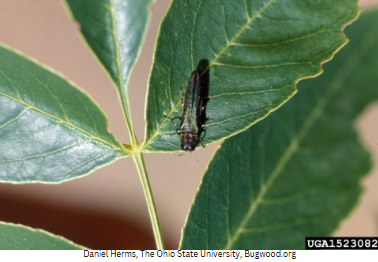
Emerald Ash Borer (EAB)
Commonly known as the Emerald Ash Borer (EAB), Agrilus planipennis is an invasive, highly destructive wood-boring beetle that targets and kills all species of ash (Fraxinus) trees within 1 to 5 years.
It is native to northeastern regions of Asia, including eastern Russia and is thought to have been accidentally introduced to North America from infested wood packaging material in overseas shipping containers.
The beetle is roughly the size of a grain of rice, measuring 8.5-14 mm long and 3-3.5 mm wide. With only light feeding of leaf margins following emergence in mid-late spring, tree death is caused by larval feeding of inner tree tissues. They have large compound eyes, short antennae and a coppery-red abdomen beneath each wing. Adult beetles can fly up to 10 km.
Pest Lifecycle
In Northern hemispheres, EAB has a two-year lifecycle.
Female beetles lay about 40-90 eggs in bark crevices, hatched larvae bore into the innter bark, begin eating tree tissues. Their feeding activity disrupts the flow of essential water and nutrients.
Adults emerge in late May with consistently warm temperatures, feed on ash leaves before reaching sexual maturity and mating begins in mid-June.
Once infestation thresholds are reached, tree mortality is assured.


